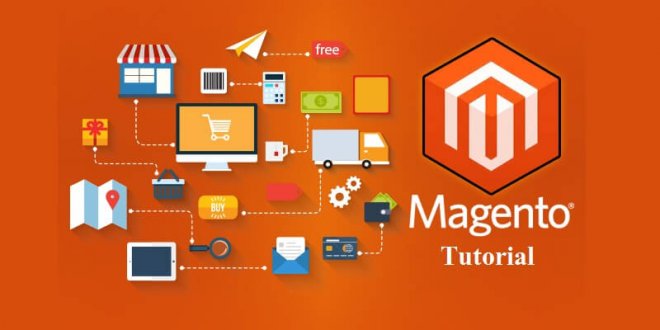Magento Tutorial for Beginners: It is no secret that Magento is one of the most powerful e-commerce platforms present on the market today. With its remarkable range of features and options, it allows all kinds of entrepreneurs to set up and manage their online stores effectively. The wide array of options available, though, may seem overwhelming to beginners.
You might have seen articles online saying that Magento is a complex platform requiring technical expertise to utilize its capabilities fully. It is true, but with the right resources and support; even beginners can learn to navigate and utilize it effectively. This post will tell you more about how to start your journey with Magento Tutorial so that you can overcome the initial challenges and feel confident in using the platform.
Magento Tutorial: How to Start Learning
Firstly, before delving into the nuances of using Magento; it is important to have a basic understanding of the platform and how it works. While it may not be for everyone; it can be a very powerful tool for those willing to learn.
Magento 2 has many features that you, as a business owner, will likely want to use. From many B2B and B2C tools to advanced customization options; Magento offers a wide range of functionalities, and it would be good to decide what you want to use before diving into the platform. Mastering all the features can take a lot of time and effort, so focus on those most relevant to your field and business needs.
Magento Tutorial for Beginners
Once you have decided which of the core features you want to use in Magento; you can follow a few basic steps to start learning the platform. Familiarizing yourself with the platform’s dashboard and navigation will be a great start.
Start with the Basics
The Magento 2 admin panel is a versatile tool created to help users manage their online stores effectively. It is divided into several key sections, each serving a specific purpose. The category section organizes and groups content, while the dashboard, sales, products, customers, marketing, Content Management System (CMS), and stores are the main sections.
Familiarity with the basics of these sections will help you manage your store’s operations, track sales, create engaging content, implement marketing strategies, and optimize your page. Don’t rush to learn and try everything simultaneously – take your time to look into each section, understand its functionality, and explore its features.
Learn About Inventory Management
Some will say that the inventory is the most important part of any store. It is, indeed, something without which an online retailer cannot function properly. That is why, to master Magento, you must learn how to manage your product inventory properly. This includes adding new products, updating product information, and keeping track of stock levels. Understanding how to categorize, where to find product information, and how to set up inventory alerts are all essential skills for effective store management in Magento. Learn how to keep track of stock levels and make the most out of the intuitive inventory management features in Magento to ensure that your online store runs as smoothly as possible.
Understand the Customization Options with Themes
One of Magento’s most loved features is its high customizability. Shop owners can modify various aspects of their online store; such as the colors, fonts, layout, and overall design, to their heart’s content. This allows them to create a unique and personalized shopping experience for their customers.
To be able to make use of all the customization options effectively; it is important to have a good understanding of Magento’s themes and how they work. Themes in Magento control the overall aesthetic of your storefront online and play a very important role in creating an aesthetically pleasing, functional, and user-friendly website.
Browse the Extensions
There are a lot of extensions in the market that offer additional functionality and features to enhance the customization options in Magento. These can largely improve the customer experience and set your store apart from the competitors. To make them work, however, you must learn how to install and configure them properly.
Installing and configuring extensions in Magento can be a complex process, but if you want to one day manage the store on your own without outsourcing the job to a Magento web design company, it is essential to invest some time in learning how to do it. Fortunately, there is a wealth of material available online, including tutorials and developer forums, to help you with the installation and setting procedure. Furthermore, many extension creators offer documentation and support to ensure you properly integrate their products into your shop.
Start Small with Your Magento Projects
Everyone wants their business to expand fast. Starting small; however, is a wise decision for beginners who are unsure whether Magento is what they are looking for. Measure your success and growth with smaller projects before committing to larger ones. This will allow you to familiarize yourself with the platform step-by-step while minimizing the risk of spending too much time on a large project that won’t be suitable for the demand.
Magento is perfectly scalable and flexible; so when your business grows and the traffic to your shop increases, you can easily upgrade. Think of the future, but plan accordingly for the present. This way, you will be able to gain confidence without overwhelming yourself and wasting valuable resources.
If something goes wrong, you can contact experts providing Magento services for assistance. They can offer guidance on how to resolve the issue and assist you with implementing any necessary changes or updates. You can learn from them, too!
Magento Tutorial: You Can Do It
There is much more to learn than the basics that we have covered. As you continue exploring Magento, you will discover advanced features and options only recommended for experienced users. Take your time to learn and experiment, and don’t feel pressured to implement everything right away.
Remember to prioritize your learning on the aspects of Magento that you know you will need and focus on mastering those before digging into the complex features. Rome wasn’t built in a day, and your Magento project does not have to be completed within one, either. After you spend some time learning, you will be able to accomplish more and more – set up your store, install the extensions, and maybe work on Magento performance optimization.
The possibilities are endless, but it’s important to remember that becoming proficient in Magento takes time and practice. Don’t be discouraged when you encounter challenges. They are there to help you grow and learn.
 free html design Free html design templates
free html design Free html design templates






